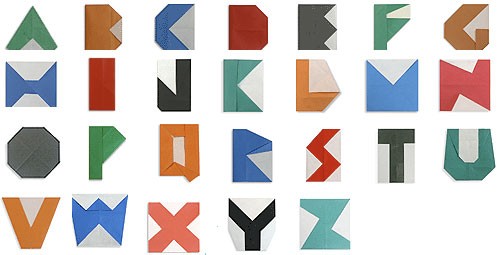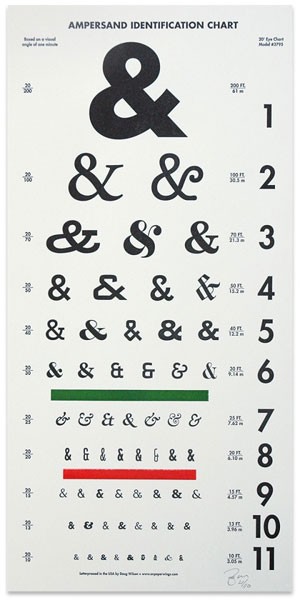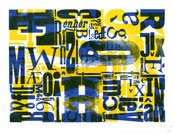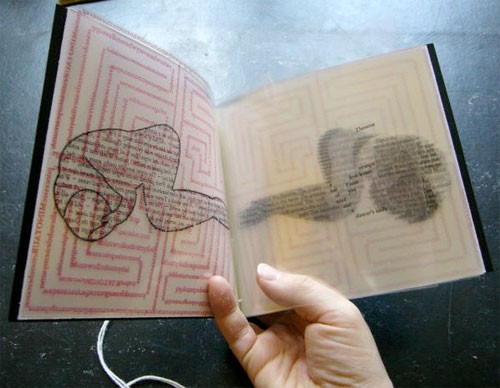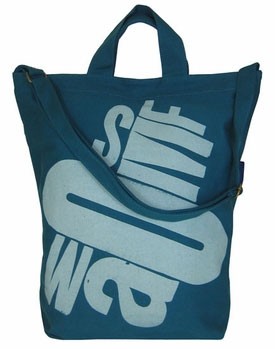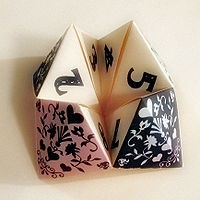 The workshop I attended last weekend, as part of the Handmade/Homemade exhibit, had 2 parts. First we learned how to do Suminagashi, a form of water and ink paper marbling, from Suzanne Vilmain. This was followed by JenMarie Davis’ Context/Content Divination: Methods of Generation.
The workshop I attended last weekend, as part of the Handmade/Homemade exhibit, had 2 parts. First we learned how to do Suminagashi, a form of water and ink paper marbling, from Suzanne Vilmain. This was followed by JenMarie Davis’ Context/Content Divination: Methods of Generation.
 JenMarie’s method is broader than the biblio-divination I wrote about earlier this week. She and her partner at Fact-Simile Press publish others poems, and she uses her techniques to create artist’s books to couch these texts. Her method could certainly be used to generate the texts as well, but like JenMarie, I usually start with someone else’s text for my books, and my challenge is always how to design a structure that enhances that text.
JenMarie’s method is broader than the biblio-divination I wrote about earlier this week. She and her partner at Fact-Simile Press publish others poems, and she uses her techniques to create artist’s books to couch these texts. Her method could certainly be used to generate the texts as well, but like JenMarie, I usually start with someone else’s text for my books, and my challenge is always how to design a structure that enhances that text.
 For me the word “divination” means a way to predict the future, like reading a tarot card, which isn’t much help in designing a book. But JenMarie wanted us to take away a method of asking questions about our texts or idea for content, and then a way to constrain the answers so we could make headway with a design. Her “divination” device is a paper fortune teller. (You may call it a cootie catcher. Wikipedia has directions for making and using one.)
For me the word “divination” means a way to predict the future, like reading a tarot card, which isn’t much help in designing a book. But JenMarie wanted us to take away a method of asking questions about our texts or idea for content, and then a way to constrain the answers so we could make headway with a design. Her “divination” device is a paper fortune teller. (You may call it a cootie catcher. Wikipedia has directions for making and using one.)
 Instead of using colors and numbers to guide the answer to a question, as in the Wikipedia directions, JenMarie had us use our biggest concerns when making a book (two of mine are: “what structure best suits the text” and “how can I make whatever I come up with affordable”) as well as a list of things to consider about a text — the story or narrative, images, sounds, memories that arise… We all folded up fortune tellers and tried them on a simple example text and image. I often get stuck when thinking about my book designs — they come slowly — and I left the workshop intrigued by the idea of asking questions that could refocus my attention.
Instead of using colors and numbers to guide the answer to a question, as in the Wikipedia directions, JenMarie had us use our biggest concerns when making a book (two of mine are: “what structure best suits the text” and “how can I make whatever I come up with affordable”) as well as a list of things to consider about a text — the story or narrative, images, sounds, memories that arise… We all folded up fortune tellers and tried them on a simple example text and image. I often get stuck when thinking about my book designs — they come slowly — and I left the workshop intrigued by the idea of asking questions that could refocus my attention.
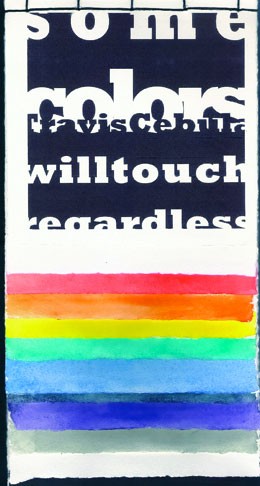 Another book I enjoyed from the Handmade/Homemade exhibit I saw last week was Some Colors Will Touch Regardless, with a poem by Travis Cebula and designed by Fact Simile Press. The press has a yearly chapbook contest, and Cebula was a runner-up. Fact Simile designs and publishes an artist book for the 3 winners.
Another book I enjoyed from the Handmade/Homemade exhibit I saw last week was Some Colors Will Touch Regardless, with a poem by Travis Cebula and designed by Fact Simile Press. The press has a yearly chapbook contest, and Cebula was a runner-up. Fact Simile designs and publishes an artist book for the 3 winners.![]() The book is a simple Japanese-bound set of cascading pages, each colored at the bottom and hand torn. The color strips echo the title, and in addition, the poem on each page mentions the color on its edge. The presentation is a simple structure but elegantly dovetails the poetry inside.
The book is a simple Japanese-bound set of cascading pages, each colored at the bottom and hand torn. The color strips echo the title, and in addition, the poem on each page mentions the color on its edge. The presentation is a simple structure but elegantly dovetails the poetry inside.![]() Unfortunately the edition is sold out, but look here to see more books published by Fact Simile.
Unfortunately the edition is sold out, but look here to see more books published by Fact Simile.
